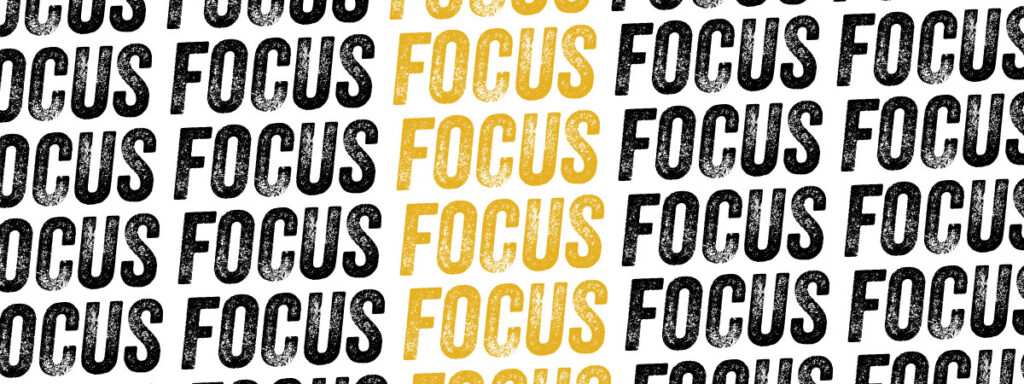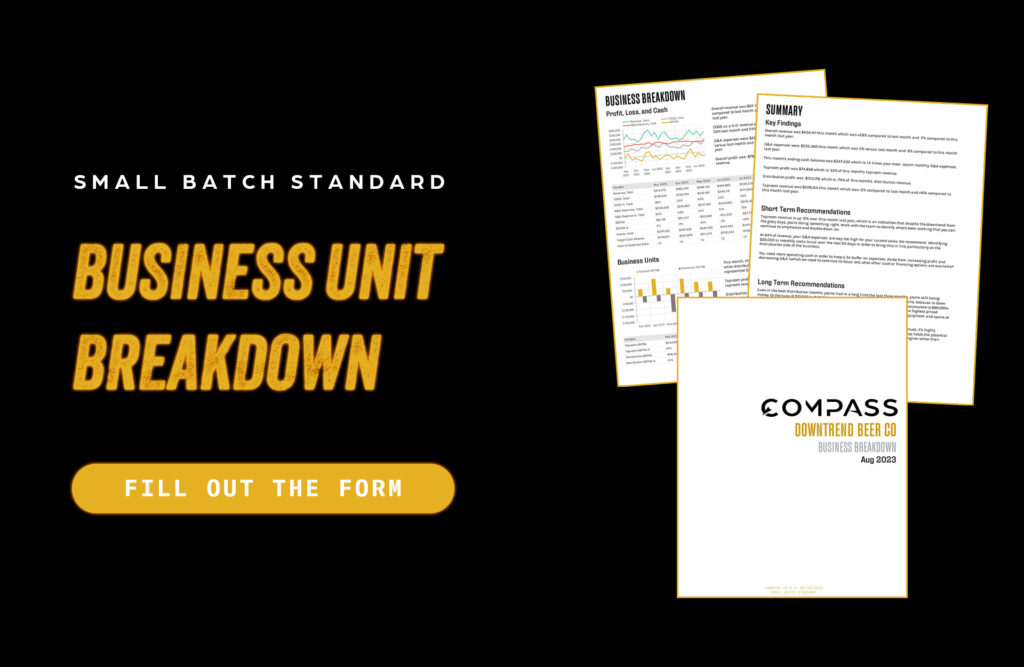This week we’re talking about working with a distributor.
Ah, the distributor.
There are a handful of states that still don’t allow self-distribution, my home state of Florida being one of them.
And while this is a total pile of horseshit, we must abide by the laws and attempt to forge a respectful relationship.
But before we get into the nitty gritty, let’s start with a common list of objections:
- We don’t want the product.
- The product didn’t sell like we expected.
- The demand is just not out there.
- Shelf space is shrinking.
All of these are a form of no that result in a request to buy back the product.
So how do we handle this?
I think we actually need to get ahead of the objection before its given.
We do this with focus.

The objection is likely for a product that shouldn’t even be in distribution. Now, I’m not saying you shouldn’t brew the product, that’s a different conversation. I’m simply saying that the product might not be right for distributing purposes.
So, what if we focused our portfolio when it comes to distribution and only offer what sells? And then, we sprinkle in a really strong marketing program behind the styles that you decide to distribute?
While we can’t tell the distributor, “No, I’m not buying back the beer.” We can tell the distributor what we’re going to offer them.
To shed more light on this, I’ve invited back Julie Rhodes from Not Your Hobby Marketing to weigh in on the topic.
What do you say, Julie?
Julie's Thoughts
SCENARIO #1
Let’s say you’re releasing a specialty product: A hazy IPA.
You have the item in stock at your distributor and it’s sitting there. They aren’t happy about it, and they want you to buy it back.
What are you going to do?
Data, Target Lists, and Brand Support
First tactic: go for the data.
I sound like a broken record, but it’s a must. Know your numbers.
I want you to get into the sales and distribution data for that particular Hazy IPA. First, I want you to look at the velocity.
How much Hazy IPA have you gone through? How many accounts is this going to? What’s your rate of sale?
The reason I want you to know the rate of sale is because that’s going to allow you to guesstimate how long it’s going to take you to sell through the remaining inventory that’s at the warehouse.
Second, I want you to know how many accounts are buying the Hazy IPA right now.
The reason? I want you to create a target list of accounts that could be a potentially good fit for you to sell that product into.
What’s a target list of accounts? It’s a focused list of accounts that would do well with a Hazy IPA.
Have you sold them one in the past? Have you sold them something similar? Are they a craft beer bar? Do they do well with local brands? Do they typically have other Hazy IPAs on tap?
And finally, you want to come to the table with fully developed brand support in your marketing and sales program. This could mean a number of things: digital advertising, social media campaigns, giveaways, point-of-sales material, a marketing blitz, etc.
Essentially, get the word out, drive velocity, and that’s going to drive sales and deplete the inventory that is being sat on.
SCENARIO #2
Second scenario: You want to release a Hazy IPA, but the distributor hasn’t taken the product yet and are already telling you no.
How do we combat that objection?
Numbers + Consumer Purchase Data
First of all, come with the numbers. If there’s one thing that distributors love, it is numbers.
Think about a similar product that you’ve launched in the past and use that to inform the conversation.
How many accounts did you sell it to (especially in your own backyard)? How fast did you move through the inventory?
But the other piece of the data game is to pay attention to consumer purchase data.
You can pull this from sources like NielsenIQ articles, Sightlines+ from Good Beer Hunting, or the Beer Purchasers’ Index from the National Beer Wholesalers Association.
But I want you to pull trends from the market that support what you’re trying to sell. In this scenario I’ve laid out, the market trends would show that Hazy IPAs are doing incredibly well and there’s no reason for the distributor to object to this product because of its style.
And again, not to sound like a broken record, come to the table with a fully developed promotional plan.
In Conclusion: Create an Easy Button
Is the distribution partnership a bit lopsided? Yeah, it is. You have to do a lot of legwork.
But you know what? Franchise laws (like if you’re in Chris’ state of Florida), forces you to sell products together. That’s just the way it is. So, why not make it a little bit easier for everybody?
Create that easy button.
Come to the table prepared with the data, prove the demand, and then talk about how you’re gonna promote the product.
That is the best way I have tackled this with wholesaler and distributor partners in the past.
Thank you, Julie. You are a wealth of information when it comes to this sales and marketing stuff, especially in wholesale.
If you want to learn more about about how Julie can help you, head to her website: Not Your Hobby Marketing. There are so many resources and articles on her website to get you started.
It’s not a surprise that Julie and I both harp on the fact that you’ve got to know your numbers in order to make solid decisions.
Down below, there is an offer to uncover your numbers. It’s an assessment that we are offering (entirely free to you)!
Just click the link, fill out the short form, and someone from the SBS Consulting Team will be in touch with you to kickstart the assessment.
It’s super easy, and I know you’re going to enjoy it.
Talk to you soon.
-cf
P.S. – You can find Part 2 of this series here.
